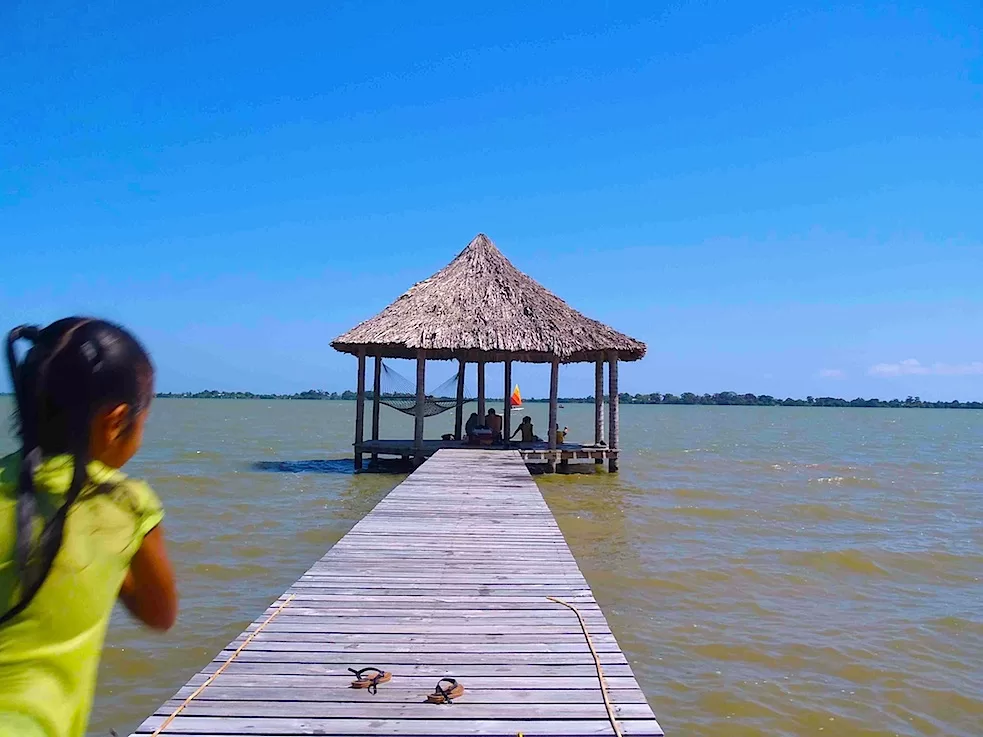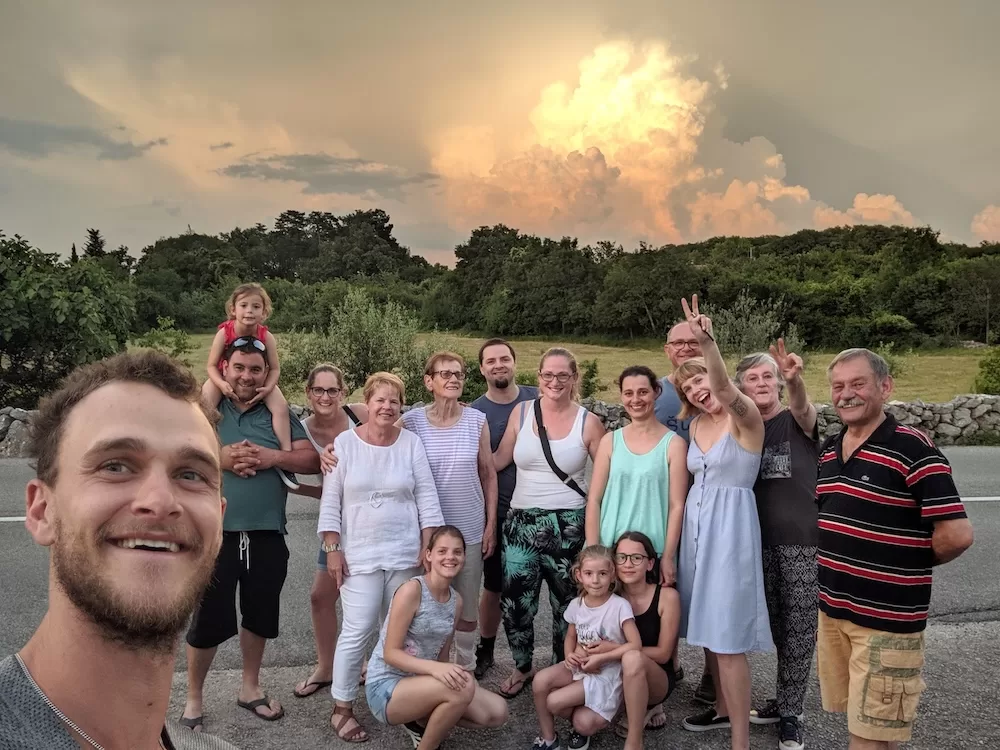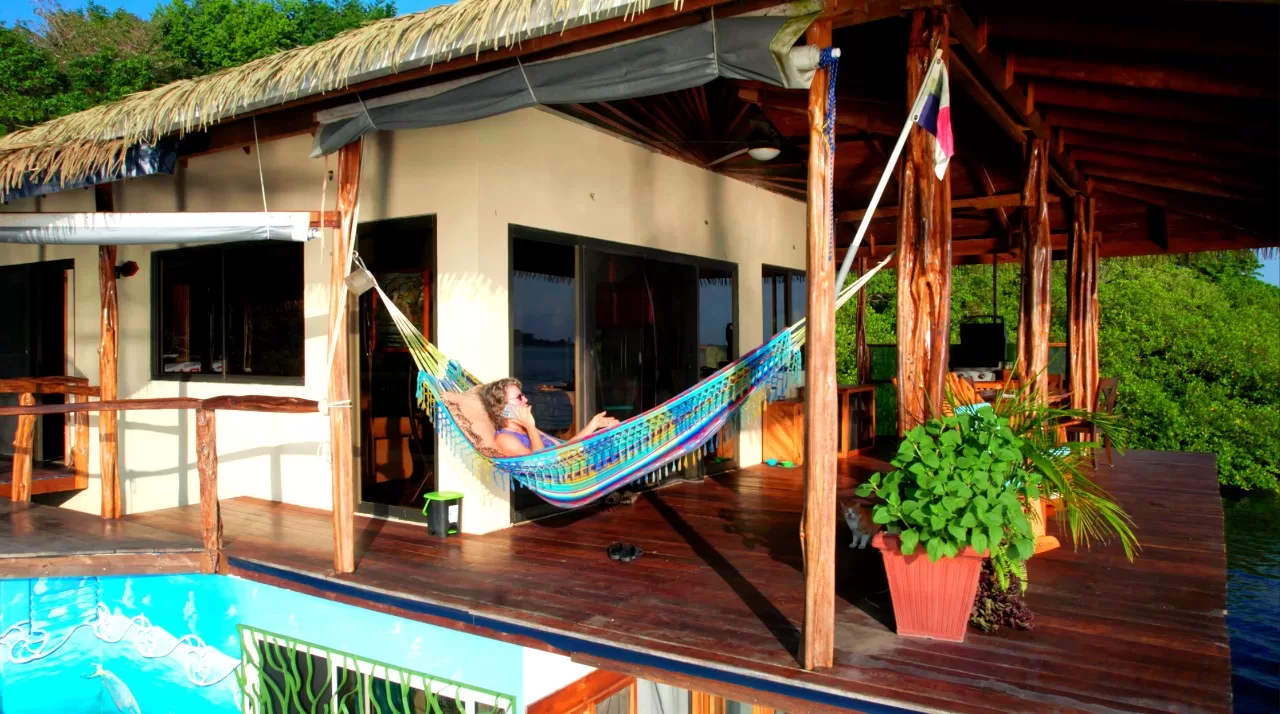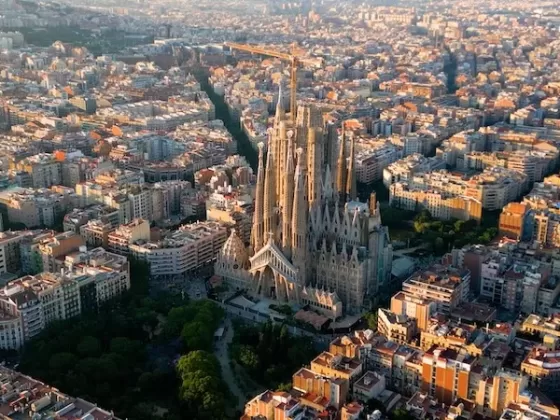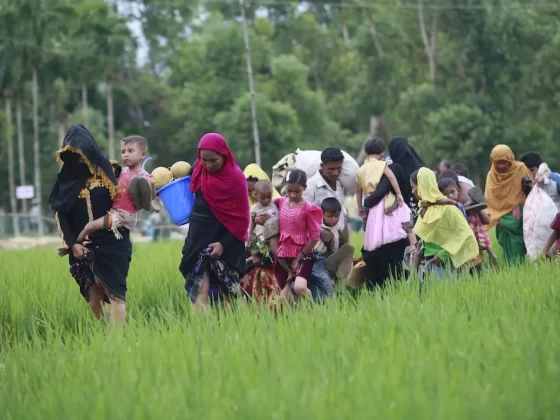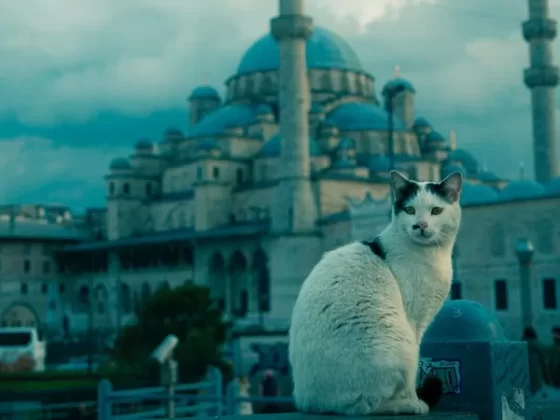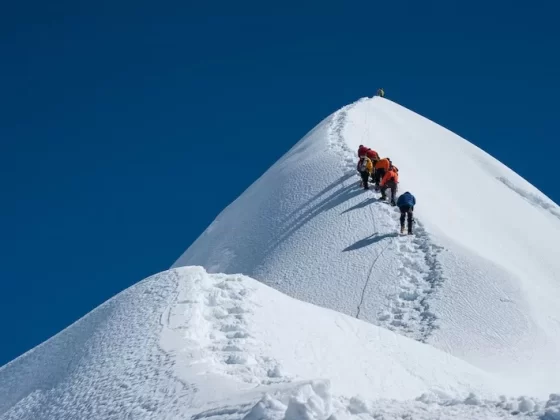I waited until late in the day, thinking it’s best to drive this kind of truckload out of the jungle after dark. A gringo driving a big pickup across central coastal Belize with an oversized load of palmy green leaves obscuring its tail lights would surely draw unwanted attention.
But the national police only man their checkpoints from 9 to 5, and the forestry police don’t work nights or weekends, so I stopped at Pasquale’s for a beer with my pals to wait. I’m working with three brothers who are part of Belize’s main indigenous group, the revered, temple-building Maya.
Read More on Fall Foliage
On the outskirts of the capital, Belmopan, sits the village of Maya Mopan, where we’re sourcing the ideal material for traditional thatch huts, the bayleaves of the local Botón palm, which grow in bunches in the hills outside town.
My local friend Bernardo calls at 3 pm to say his tractor is “broke down.” Could I drive up into the hills to pick up the load? His brothers have it all harvested and bundled. They’ll guide me into the jungle, almost to the Sibun River, and help load it all up.
OK, I say. It’s late in the dry season, with no mud to bog down my truck. Might as well give it a shot.
Not that it’s going to be a Sunday cruise. I’ll need to drive nearly an hour down narrow tractor paths used by campesinos to cart produce from their slash-and-burn plots, then several more miles off-road, load my one-ton truck at a few hillside spots, tie down the fragrant leafy load, and finally make it back to at least a dirt road before it’s too dark to see.
But it’s 4 pm when the Maya brothers jump in the back of the truck with their machetes. It won’t be full dark until 6:30. Plenty of time. Bernardo and family are Mopan Maya, which, of course, is not to be confused with the town of Maya Mopan. Mopan is one of three indigenous Maya dialects in Belize: Mopan, Yucatec, and Kekchi. Most Maya also speak Spanish, English, and Creole.
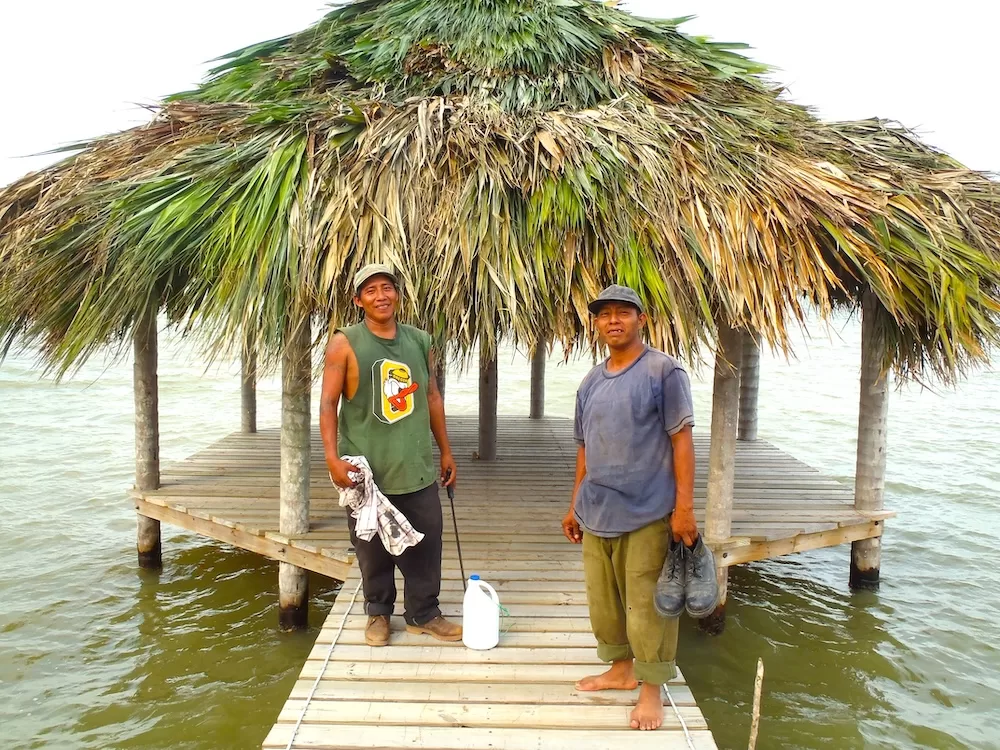
More importantly for my purposes, they are also master craftsmen at building traditional palapa, or thatched roofs and buildings. I have long admired their work, and had waited far too long to put a thatch roof on the palapa at the end of our pier, which juts into Belize’s seaside Southern Lagoon.
I’d previously hired local Creoles to build my 132-foot pier, using posts sunk into the sand, and treated lumber for the walkway and deck. They did a fine job with the pier and frame, but their thatch work on the palapa was flimsy and with insufficient pitch to properly shed rain.
I needed to find an experienced Maya, for the construction and for sourcing the best leaves. Bernardo and his brothers are the best. They learned it from their father, who learned it from his father.
I needed to find an experienced Maya, for the construction and for sourcing the best leaves. Bernardo and his brothers are the best. They learned it from their father, who learned it from his father. They looked at our 12-ft diameter structure and immediately said it would require 800 bayleaves.
The round, fan-shaped leaf of the “bayleaf,” referred to locally as Botón palm, is woven vertically for round, conical roofs. Cohune palm fronds, the other main traditional building plant, grow to a dozen meters long and are woven horizontally for rectangular roofs. Cohune leaf thatch looks elegant, but bayleaf thatch lasts much longer.
But the leaves can only be harvested a few days before or after the full moon. Prevailing wisdom says the tree’s sap is stronger during a full moon, and leaves cut at other times will quickly deteriorate and be consumed by insects. Whether or not this is true is beside the point: Bernardo only builds thatch roofs with bayleaves he harvests himself around the full moon.
Bayleaf palms (sable mauritiiformis) grow on the edges of, and in the shade of, high-canopy forest. Done properly, its leaves are sustainably harvested, and the tree will have more and stronger leaves in two years’ time. But they are increasingly hard to find due to the popularity of slash-and-burn agriculture in the area, which has sharply reduced the acreage of old-growth forest.
For centuries up until the mid-1990s, the Maya would cut small garden plots from the jungle and burn whatever brush they didn’t use, brother Enrique explained to me as we drove through second- and third-growth bush. But refugees from Belize’s unstable Central American neighbors have arrived in droves in the last few decades.
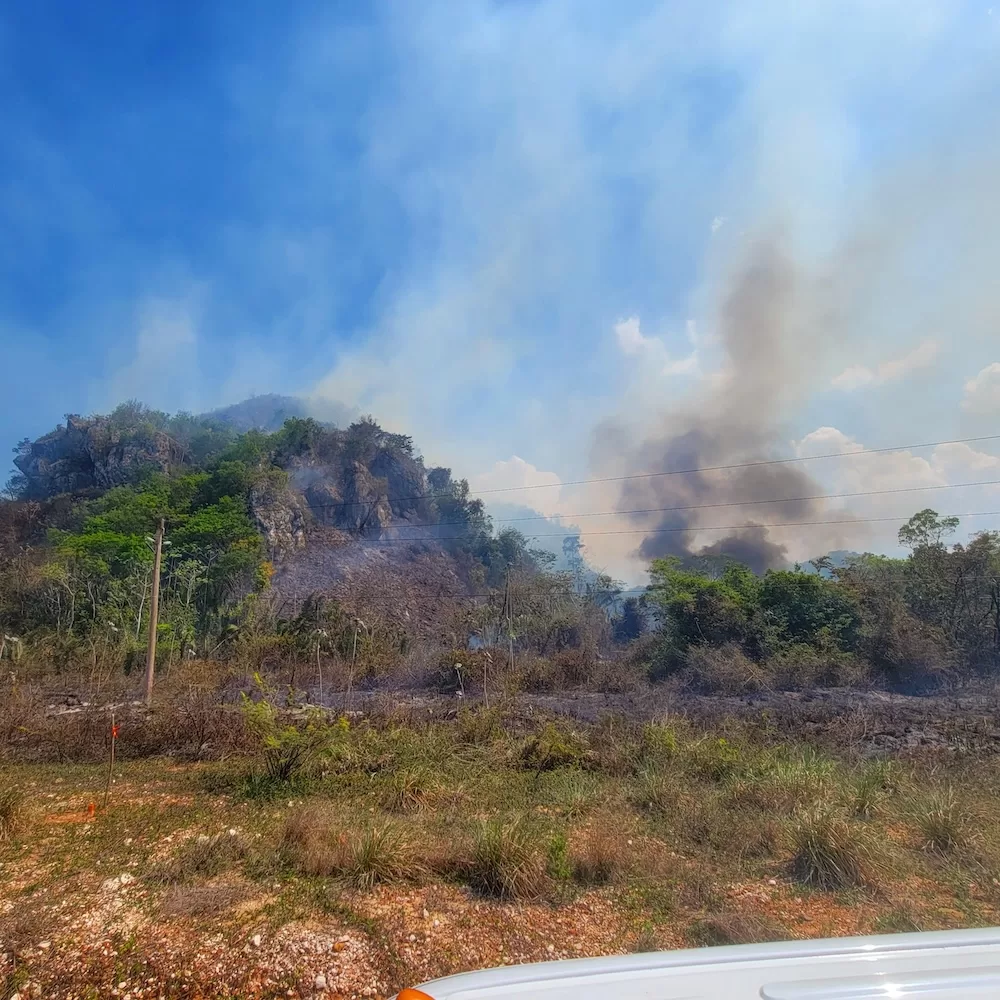
Given Belize’s low population, they’ve mostly been welcomed, but for one problem: their habit of setting fire to forests just to clear a small patch to garden. There are also culturally-ingrained local reasons for forest fires. After the dry grass burns, for instance, the new green shoots attract deer, making for easier hunting. Every dry season, thousands of hectares of government and private land burns, enabling farmers to clear small plots for corn, cassava, and watermelon.
Vast areas of pristine nature are burning—somehow even swamps burn in Belize. This problematic habit is likely to be changed only through improved education driven by greater governmental concern. Thankfully, conservation and fire prevention are being taught in schools today, while government agencies and NGOs have begun using prescribed burns, drone technologies, and fire suppression teams to mitigate wildfires.
it’s wrong to circumvent the law, but some of these bureaucrats who had me chasing my tail might enjoy the shade of our thatch palapa someday.
A single cohune palm tree often contains an entire eco-system of birds, frogs, lizards, insects, bats, spiders, bromeliads, orchids, vines, and more. Often a burned palm sprouts a new leaf crown above its blackened base, but in some cases the fires kill that as well. Bayleaf palms are becoming hard to find on public land. Some palapa builders strip off the leaves unsustainably, killing the trees, and use the trunks as posts. Others cut out the trees’ hearts to the delicious “heart of palm” vegetable common in salads, stir-fry, and ceviche.
Of course, few of them have permits, which Belize requires to harvest bayleaf and all non-propagated trees and other large flora. Permits are cheap, but not easy to acquire. In this, my first quest for a permit, I visited offices without signs, on nameless streets, in my district and the capital. I encountered bureaucrats wearing mismatched uniforms who told me to come back tomorrow. Or to go to another office in a distant town. But only on Monday morning. And not before the election. Or after.
It was the definition of a wild goose chase. Although I ultimately found the right office and helpful civil servants, at the time I decided to go without a permit and move under cover of darkness, which we were able to do without a hitch. Of course it’s wrong to circumvent the law, but some of these bureaucrats who had me chasing my tail might enjoy the shade of our thatch palapa someday.
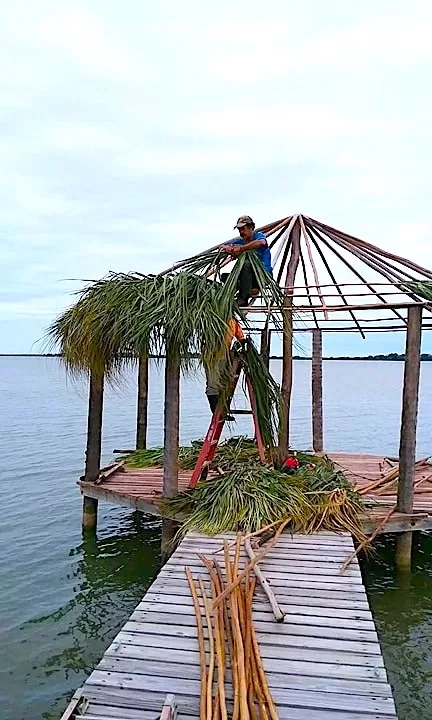
Bernardo and his brothers planned to stay for three days, living in our watchman house and working dawn to dark. I’d bring them groceries and ice-cold cokes. And more sugar for their coffee, always more sugar. I make sure the butane stove and solar power system work and provide ladder, hammer, and large spools of waxed cord.
Their main tool is the machete. Three men, three days—nine man-days of work. Eight hundred bay leaves in bundles of twenty five. Fifty shaved sapodilla sticks of various length and thickness for the roof frame, lashed together artfully with waxed cord, making a thatched dome twelve feet high.
One man shaves the bark then lashes the sapodilla sticks together for the frame, above the main posts already in place. Another man works on the deck, handing leaves and sticks up to his brothers and staging each process. The third brother rapidly weaves the leaves, stem upward, into the roof frame.
He gathers them tightly in a closed fan and weaves the “arms” of a leaf behind one horizontal rib and the “legs” around another. He then tightly packs another leaf in beside it, all around the roof frame, in overlapping rows upward for a waterproof thatch structure. And as they work, they smartly start weaving wherever it will provide strategic shade from the hot sun.
The thatch roof is guaranteed for 20 years. Setting aside hurricanes, if it ever leaks or falls apart I’ll get my money back or free repairs. A hurricane might snatch the entire roof up and blow it across the lagoon undamaged. But I have seen many survive the most devastating storms. All for eight hundred dollars cash, plus a few hundred dollars of diesel fuel for the truck, groceries, and some bodywork to fix the damage a burnt mahogany stump did to my nice Ford.
Bernardo was born in and grew up in Belize, but for some reason has a Guatemalan passport. He never went to school, but he can write. And speak four languages. He has good insight into the incredible mix of vibrant cultures that make up this former British colony.
When I bring home some fresh-cooked, piping-hot tamales wrapped in banana leaves, he asks me if they are Creole tamales. I say no, Spanish. He smiles and nods in approval. He has a wife and three little kids living down in a quiet Maya village near Punta Gorda, about ninety miles south. He stays with them as often as he can when he’s not off building something for somebody, somewhere.
Bernardo knows a great deal about plants and trees and the ways of nature, yet he seems wary of the jaguars in our area. They have eaten a few of our watch dogs at night, but they never bother people. Still, we make sure the watchmen’s children are up on their porch by four or five o’clock.
On the morning of day three, it’s obvious we don’t have enough bayleaves. We’ll need about 250 more, so we drive back across the savanna to the jungle hills. Bernardo and Enrique hop out of the truck and trot up into the forest. The woof and chatter of howler monkeys seems more intense and focused, and by the sound of the monkeys and the screech of birds, I can tell where the brothers are cutting.
After a while they emerge with massive leaf stacks on their backs, vine-wrapped in bundles of 25.
The thatch is magnificent. It is authentic, crafted in traditional Maya style passed down through a thousand years.
These leaves are larger, which is necessary for the top of the thatch. They toss the bundles in the truck and race back for more. It’s not yet 10 am, but they’re concerned about “ya-wa”, or jaguar. I tell them that the noise is just howler monkeys. Where there are monkeys, jaguar will follow, they respond. I never considered that before.
Sunday afternoon, day four, a strong, steady sea breeze. It looks like rain, but they’re almost done. Four more leaves! Enrique and I drive back up to the hill to find four more primo leaves, while Bernardo does the final lashings. By five, we are done, tools loaded in the truck, site clean.
The thatch is magnificent. It is authentic, crafted in traditional Maya style passed down through a thousand years. Resembling a haystack from a Monét painting floating above the water, it is green and lumpy, not yet trimmed at the bottom. It will take weeks to dry, smooth out, and brown.
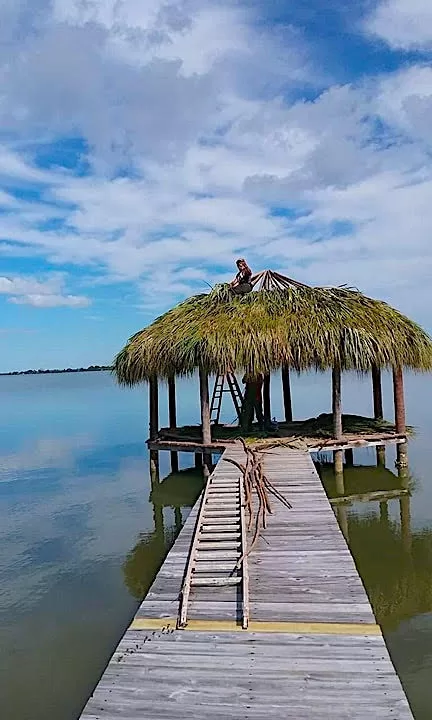
I am surprised how large the structure now seems, how much volume it contains, now with a roof overhead. Do you want to spend the night and head back to Maya Mopan in the morning, I ask them. No, go back now, they say. I pay them in cash, tossing in an additional $200 for the added leaves and extra day. $1000 even.
A good deal for me, and a huge windfall for them. I know the practical uses they have for this income, but Bernardo tells me the first thing he will do is go to a bar. On the 90-minute drive back to town, I repeatedly warned them about flashing cash, especially in a bar, especially in Maya Mopan.
Go to a grocery store, buy something and get smaller bills, I urged. Be careful in bars—never act like you’ve got money. OK? “OK,” they smile, “we’ll be careful.” In the end, it isn’t jaguars that we needed to worry about. On Tuesday, Bernardo’s mother called.
Monday night, the day after I’d dropped them off, he got jacked at the neighborhood bar. Some thug waited outside with a two-by-four, broke his jaw and snatched nearly the entire $1000. In a small town, everybody knows your business, but not everyone is your friend.
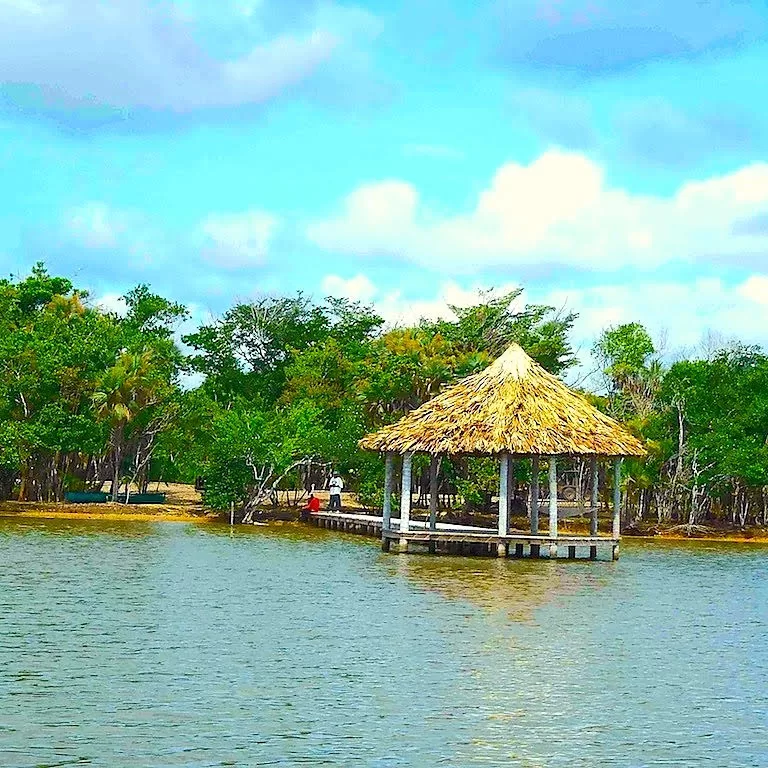
Bernardo was unable to talk, yet he refused the hospital, despite the fact that it’s free. His brothers never got paid. And as soon as he could walk this morning, Bernardo rolled up his hammock and took the first bus home, back to his wife and children, back to the quiet village along Silver Creek.
——————
Based in Belize and Minnesota, Mark Stratman is a real estate professional who has lived and worked in Central America for decades. Check out his latest Belize island property for sale.
